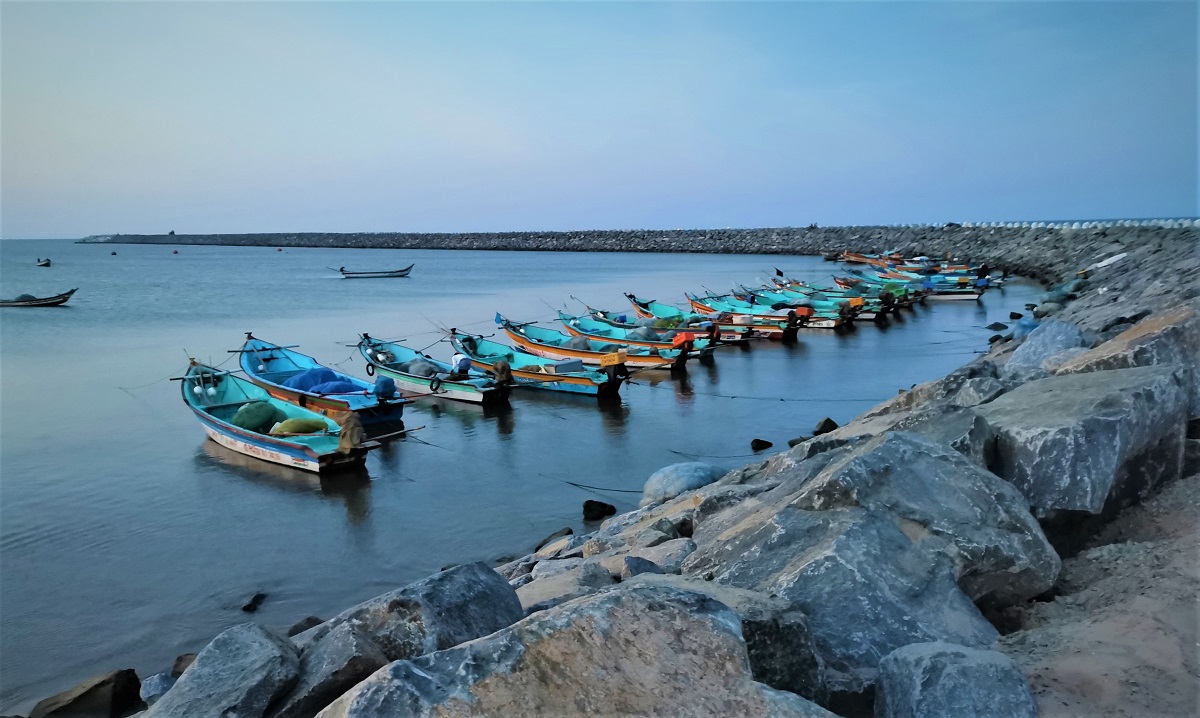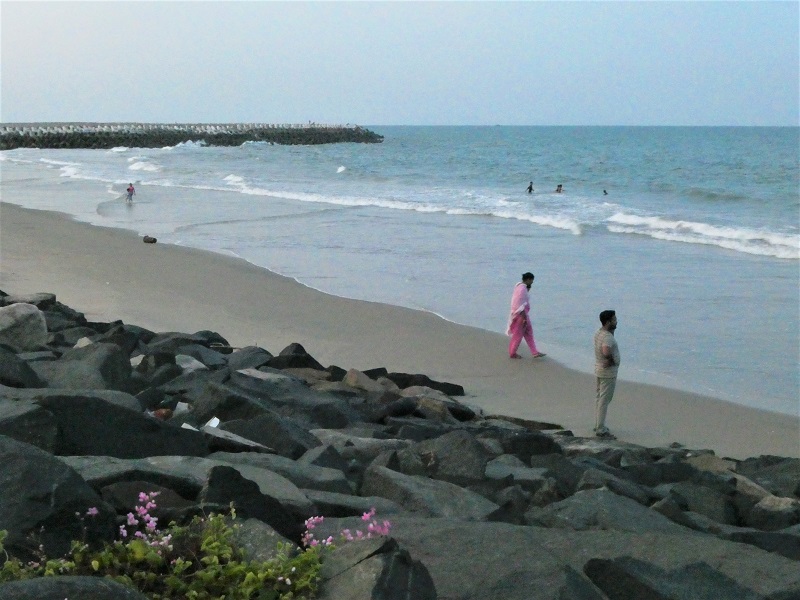
Where is Tranquebar?


The Happy Travellers
(Click on the photos to view them in their full beauty)


Conjuring up romantic ideals, Tranquebar, which also goes by the name of Tharangambadi, is often known as the ‘Land of the Singing Waves’.
Tranquebar ‘is’ romantic.

Land of Singing Waves
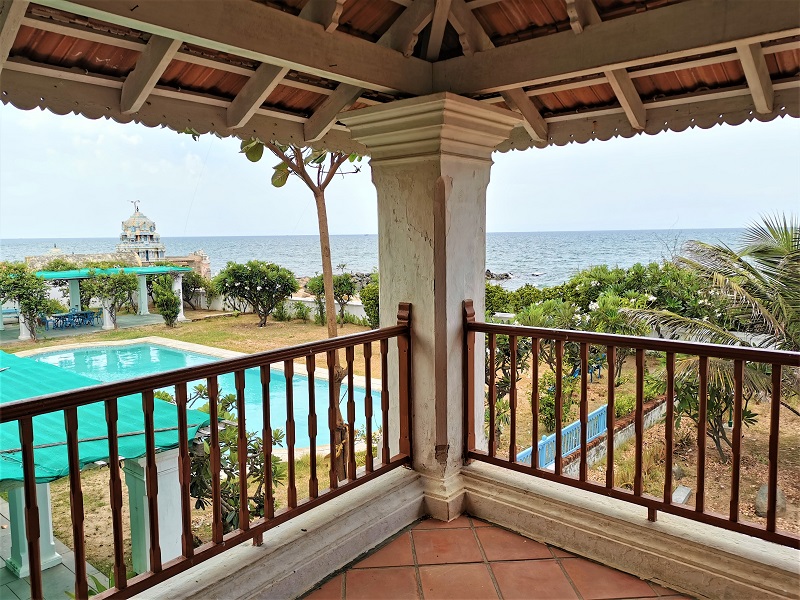
And while we were three friends (not lovers!), this small seaside town, nestled among swaying palms, spice trade history, and local fishing, was the perfect destination for our first travel experience outside of New Zealand since the world shut down in early 2020. Planning became exciting as we—Shoba from Chennai, Claudia from New Zealand, and I—researched this historical town for our planned short stay.
A treasure trove of stories

What we discovered was a treasure trove of stories that date back to long before the Danish colonised the area and the struggle between colonial powers when they were determined to take control of the lucrative spice trade. Located towards the south-eastern area on the shores of India in the Bay of Bengal, Tranquebar has maintained a certain feeling of the long past as you wander the streets of the ‘old town’. The wider area is known as the Coromandel Coast and lies 6-hours drive, 284km south of Chennai.
The birth of the Danish East India Company
From the 10th to the 14th century, the Cholas and Pandyas ruled this land which sits in the Nagapattinam district of Tamil Nadu. There is an inscription, ‘Sadanganpade’, on the arched entrance to the town from the 14th century when the town was known by this name. In the 15th century, it was ruled by a Thanjavur king and during these times Tranquebar became a bustling commercial hub doing trade with the Arabs and the Portuguese. In 1620, after failed attempts to reach an agreement in Ceylon (Sri Lanka), the Danes arrived in Tharangambadi under the leadership of Governor Roland Crappe and Admiral Ove Giedde. They signed a treaty around trading rights with the Thanjavur King Nayak Ragunatha and the Danish East India Company took up roots in the town.
The Town Gate & Dansborg Fort

In the 1660s, the Danish built a walled settlement from the ‘Town Gate’ (Inscription: ‘Landporten’ in Danish) to the Dansborg Fort. Due to its deteriorated state, in 1791 the ‘Town Gate’ was rebuilt to replace the 130-year-old original structure and the new gateway still stands today. Until the end of the 17th century, Dansborg Fort, constructed on the seafront in 1624, was used for residential and storage purposes and the export of commercial amounts of pepper to Denmark.


The adjacent parade ground was a bustling scene of official parades, processions, and trade activities.
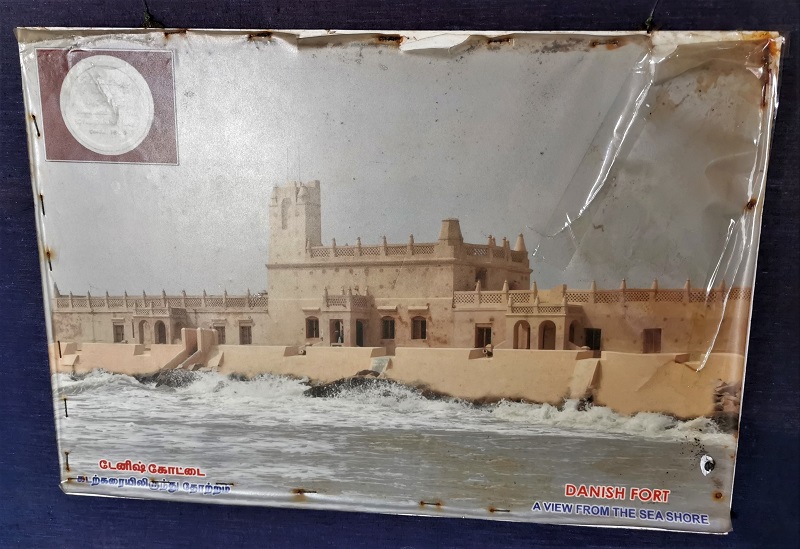

The German Missionaries arrive
In 1706, two German protestant missionaries, Ziegenbalg and Plutschau, arrived in Tranquebar having been sent by the Danish King. After their arrival, and due to the growing Christian population, the New Jerusalem Church was built and combined a synthesis of indigenous Indian features, and European traditions in church building.
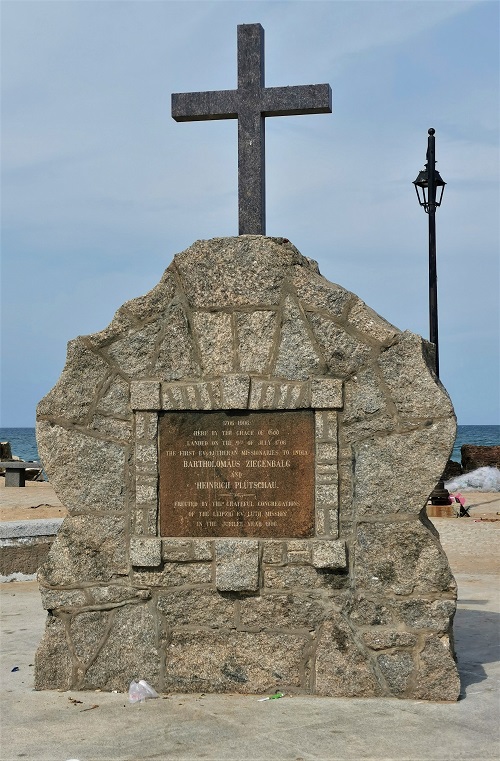

These missionaries set up the first printing press in India and by 1712 there had been 300 books printed in Tamil. The first book considered to be printed in India was the Tamil version of the New Testament Bible. The Ziegenbalg Museum complex was originally a house on Admiral Street and was purchased in the 18th century to be used as the Lutheran Mission. Within the complex was Ziegenbalg’s residence, a small building which held the ‘first printing press’ along with residential and mission buildings.

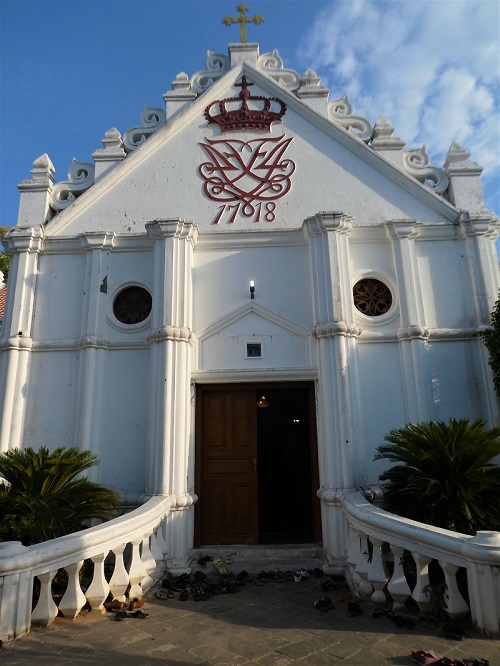
Progressive trade and development
Progress in trade continued and by 1730, silver and copper coins were being minted in the town and in 1789 the first gold coins were introduced. During this time, the Governor’s bungalow was constructed (1776-1784) as the private residence of David Brown, Governor (1774-1779), a Scottish-Danish merchant and shipowner. It became the official Danish Governor’s Bungalow following the state purchase in 1784 with additions and alterations subsequently carried out during British rule. It stands unattended at this time. On the Queen Street side of the 18th-century Governor’s bungalow, sits the Commander’s House—also known as ‘Halkier’s House’—which also served as a mission hospital for some time and later hosted a teacher’s training institute. Today, the fort, several churches, and old monuments are the only remnants of the Danish heritage. The Danes ruled Tranquebar until 1845 when they sold out to the British.

Masilamani Nathar Kovil Temple

In this small fishing and trading village, and just along from the fort, in an area eroded by the sea, tsunami, and time, is one of the few shore temples in India. It is the 700-year-old Masilamani Nathar Kovil temple. The temple is a testament to the rich history prior to the arrival of the foreign entities who used this port area as a stopping point for trade. The temple design is of joint Tamil and Chinese architecture in an attempt to attract Chinese merchants and visitors who were in India in those days. A Shiva temple, it was built in 1306 on land donated by King Maravarman Kulashekhara Pandian and at that time the small village was known as Kulashekharapattinam. The construction date is confirmed by an inscription which was once embedded in its Eastern wall and is now in the Dansborg museum.


Claudia and Shoba with the temple dogs Tranquebar
The temples Mulavar/Moolavar (central deity) and statues are much older than the current temple buildings. The presiding deity is known by three names: Masilamaninathar, Masilamanisvarar, and Masilanathar and his consort’s name is Akilandesvari. The old temple now sits closer to the ocean and the waves touch her walls; however, rock banks support the edges of the entire complex. The newer temple was consecrated in 2013.




Bungalow on the Beach
Towards the ocean is the ‘Bungalow on the Beach’—a beautiful and imposing building which was used as the summer residence of the ‘British Collector’. This heritage building was in a state of advanced disrepair when it was purchased in November 2002.


Restored 16 months later, it is now a functioning and grand hotel in which we had booked our stay in Tranquebar. Arriving around midday at ‘The Bungalow on the Beach’, we anticipated a smooth time booking in, lunch on the terrace, a wander around the complex, the fort and the temple before an afternoon swim in the hotel pool right by the beach. However, we were met with a booking error and 2 hours of re-organizing ourselves and feeling hot and bothered in the process of sorting out this unscheduled issue. We were able to secure a one-night stay instead of two and thereafter we ordered a late lunch.






Fort Dansborg

Fort Dansborg is now a museum and houses important historical Danish manuscripts and sculptures. However, it is much in need of some tender restorative treatment to preserve artefacts of the rich history of centuries gone by.



Exploring the beach and Fort
After lunch, we explored this site, pausing for photos on the terrace by the sea with the warm breeze on our backs, before heading down to the beach to feel the sand between our toes and the warm water of the Bay of Bengal.


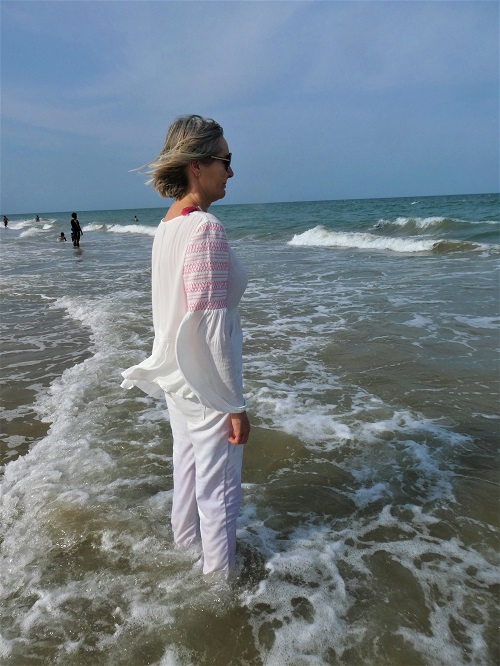


Beyond the beach in Tranquebar
Leaving the seafront, we followed a footpath that took us past the Governor’s Bungalow and the Commander’s House to the corner of Queen and King Streets where the Zion Church stands solid and strong near the Bartholomaeus Ziegenbalg landmark.

Religious History in Tranquebar

Along with the Zion Church, the New Jerusalem Church and Tamil Evangelical Lutheran Church stand today as monuments to the past. The Zion church, constructed in 1701, combined colonial and Indian architectural design and has undergone several refurbishments over the ensuing years.

In the 1600s there was a high mortality rate among European settlers and a cemetery was established. It was initially connected to the Dansborg Chapel and in the early 1700s, the Zion Church ground became the main burial ground. Today you can see the names of several Danish colonial officials and tradesmen carved on the headstones. The New Jerusalem Church grounds also have a cemetery with notably aged graves and headstones.


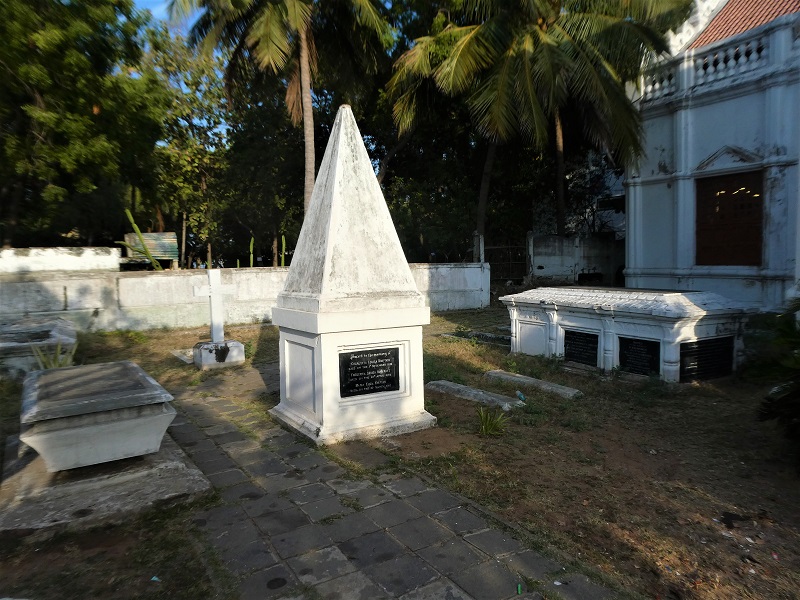
We went into the Zion Church grounds and looked around the cemetery and information boards before going into the church itself which held the religious missionary community together hundreds of years ago. The simplicity of the dark wooden interior left us with a feeling of calm and quiet within.


Remnants of church bells from an era long past stand quietly in a corner.

Feeling relaxed we walked along Post Office Street near the hotel to explore the ancient temple on the small promontory above the waves of the bay. Temple dogs and puppies welcomed the attention of new visitors. (see photos above)


Further along the road, we came to an area built up with boulders where the waves crashed as they rolled into the seashore and just a little further along this quiet back road was a small beach with brightly coloured boats pulled high up on the shore.
We passed ‘The Five Tamil Houses Craft Centre’, which was closed so we were unable to view the work carried out there. In Goldsmith’s street, opposite the craft centre is Nayak House.

Rehling House
One of the amazing stately buildings that has stood the test of time, built in the first half of the 18th century, is Rehling’s House. The second level was added in the second half of the century and the portico at the turn of the century. Two Danish Governor’s, Peter Hermanson and Johannes Rehling lived in this beautiful residence. They added verandahs and porches to adapt to the tropical Indian climate. Walking down the streets of Tranquebar is a joy and delight as you feel the history surround you when observing these old buildings preserved for their architectural value and history. (Unfortunately I have no good photos of Rehling’s house to show).
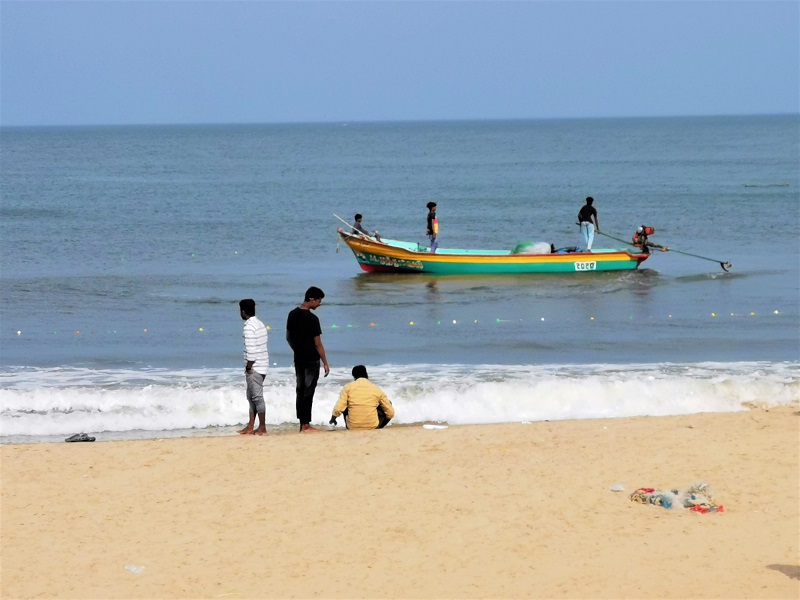

One of the characteristics that set Tranquebar apart from its neighbouring towns and is an attraction for tourists is the Danish colonial architecture. The unique style came about due to a synthesis of Danish and local Tamil craftsmen’s work, whose architecture was concerned with domestic and functional rather than public and monumental buildings. Today, these buildings are somewhat endangered due to development pressures, lack of sensitivity and appreciation for this unique architecture. However, the Bungalow on the Beach, The Gate House and Nayak House are preserved as heritage buildings. Since 2002, moves have been initiated to restore the old fort and other buildings in a collaboration between the Tamil Nadu State Archaeological Department with the Tranquebar Association.

Restoration and preservation

Following the devastating Indian Ocean tsunami in 2004, when much of the area was severely damaged, the Danish Bestseller Foundation wanted to help Tranquebar overcome the disaster and initiated social and educational projects, coastal protection planting, solid waste management and other schemes to aid employment and get this gracious town back on its feet again. In 2005, they decided to buy some derelict and damaged Tamil houses in Goldsmith’s Street and partnered with other organisations to restore them. INTACH (Indian National Trust for Art and Cultural Heritage) Pondicherry, and The Bestseller Foundation, along with other organisations, are committed to preserving the architectural heritage on a larger scale and this can be witnessed as the humble streetscapes, remnants of an era long passed within the walled town of Tranquebar. Some have become boutique hotels, some reserved for the arts and crafts.
The sheltered boat harbour

In the small harbour where boats were tied up to their moorings, the early evening light provided a tranquil scene of calm and colour as we walked along the road on the top of the breakwater. The walk took us to the seaward tip where construction was still happening whilst the road was being sealed and the view out to the horizon provided a canvas of gentle waves bringing in a warm breeze.


Relaxing at the end of a long day
Wandering back to the hotel we felt relaxed enjoying the atmosphere of this small hamlet by the ocean. We swam and lay about in the pool watching a young couple who it turned out had just been married the day before and were doing a rather long photo shoot while the bridegroom’s parents watched from the pool lounge chairs. Later at dinner the parents and young couple joined us and it turned out the bride came from a local town about 10 minutes outside Tranquebar and the bridegroom was from Australia. The night was warm and tropical and we slept well with a plan to explore the old town with its restored buildings and rich history the following morning.
An unexpected extended stay in Tranquebar
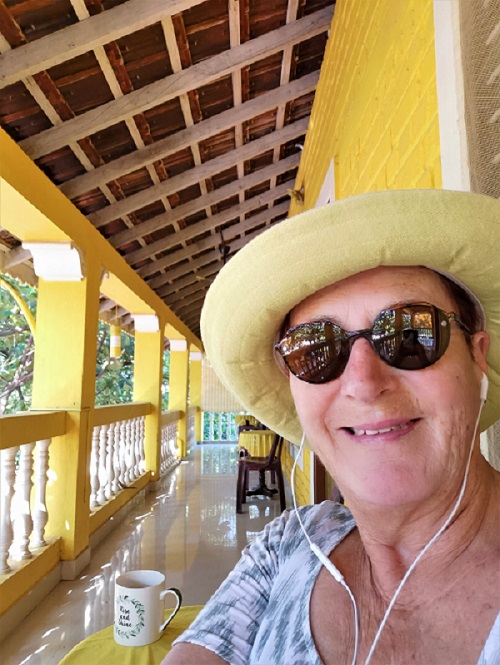

Our plans were interrupted once again when I fell ill the next day. Shoba and Claudia left Tranquebar for Pondicherry and the continuation of the planned trip, while I booked into a small resort hotel near the ocean to rest and recover. I sat on the balcony of the bright yellow complex drinking my tea and observing the chickens roaming the complex and was able to watch the birds in their cages as I took my daily walk.





A few days later I was able to roam about the town and view some of the places we had read about and for which I have written above, wondering what it must have been like to live in those colourful bustling times of the spice trades and colonialism.


I eventually left Tranquebar and travelled back to Chennai via Ponidcherry where I enjoyed lunch in a beautiful refurbished French Villa, now a popular restaurant.


My time in Tranquebar gave me a taste for the tropical southern east coast of India and a thirst to return and explore more.
A few weeks later I left India to return to New Zealand.

#tranquebar #chennai #tamilnadutourism #travel #naturephotography #incredibleindia #nearbychennai #southindia #chennaidiaries #tamilnadu #mesmerisingarchitecture #pallavdynasty #teresaglobaltravels #traveltheworld #adventure #bungalowonthebeach #tharangambadi #ozonerichbeach #dansborgfort #ancientindiantemples #shoretemples #teresatraveller #indiatravel #storiesofindia #indiapictures #nature #instagood #travelphotography

